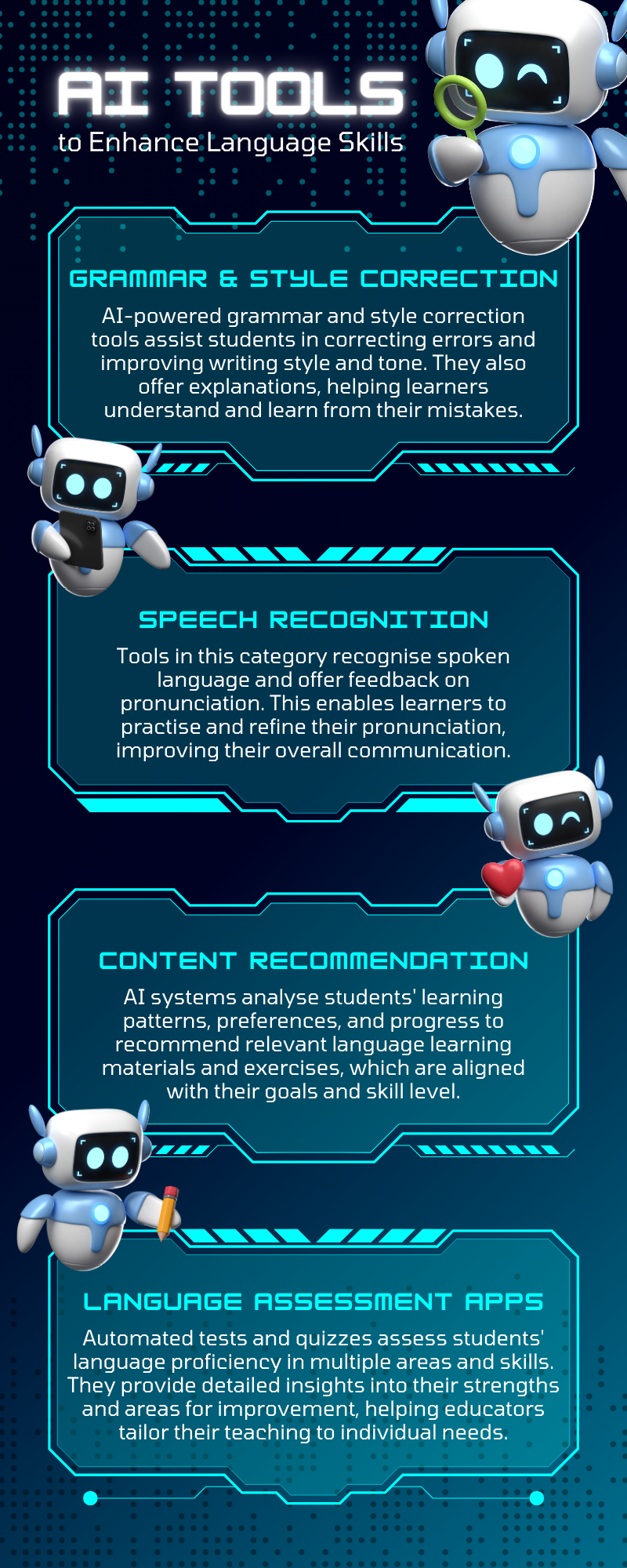
Voice recognition technology, an integral component of voice-enabled devices, has transformed human-digital interaction. It utilizes advanced natural language processing and speech-to-text algorithms to interpret human speech accurately, essential for everything from interactive voice response (IVR) systems to personal digital assistants.
This technology’s effectiveness depends on understanding conversational search queries and adapting to varied phonetic expressions, recognizing the context and intent of spoken commands. As it evolves, voice recognition increasingly integrates sentiment analysis, semantic search algorithms, and contextual understanding to enhance user experience.
This advancement not only boosts user engagement in voice interactions but also propels the development of sophisticated speech analytics, leading to a more personalized and contextually relevant experience in voice-activated searches and interactions.
Deep Dive into AI and Machine Learning in SEO
The Role of NLP in Voice Search
Refining Voice Interactions through Natural Language Processing
Natural language processing (NLP) stands at the core of optimizing voice search, a key element in the realm of voice recognition technology. It enables voice-enabled devices to process and understand human language in a way that mimics human conversation. By leveraging NLP, devices can interpret the nuances of speech-to-text algorithms and handle the complexities of conversational search queries.
This technology plays a crucial role in enhancing the user experience, ensuring that voice-activated search is not only responsive but also contextually aware. NLP helps in deciphering query intent recognition, a vital aspect of delivering relevant search results.
Additionally, it contributes to the development of semantic search algorithms and phonetic search capabilities, making voice searches more intuitive and user-centric. Through NLP, voice search becomes a more interactive and dynamic tool, offering personalized responses and improving user engagement in voice interactions.

Speech-to-Text Algorithms: Enhancing Voice Query Accuracy
Optimizing Voice Queries with Advanced Algorithms
Speech-to-text algorithms are pivotal in translating spoken language into text, a fundamental process in voice-enabled devices and voice recognition technology. These algorithms are intricately designed to handle a wide array of conversational search queries, accommodating various speech patterns, accents, and dialects.
By efficiently converting speech into text, they enable accurate interpretation of voice search commands, laying the groundwork for effective natural language processing. This technology is crucial for the seamless operation of interactive voice response (IVR) systems and voice-activated search, ensuring that each query is understood in its contextual and semantic intent.
The integration of speech analytics with these algorithms further refines the user experience, allowing for a more personalized and context-aware interaction.
As voice search trends evolve, these algorithms continuously adapt, improving their capability to understand and process the nuanced and dynamic nature of human speech, thereby enhancing user engagement and the overall effectiveness of voice search interactions.
Tailoring Content for Conversational Voice Searches

Adapting to the Nuances of Conversational Queries
Optimizing for conversational search queries is a key strategy in the evolving landscape of voice search, driven by advancements in voice recognition technology and natural language processing. This approach involves understanding and aligning content with the spoken language optimization needs of voice-enabled devices.
By focusing on the conversational nature of speech-to-text interactions, content creators can better cater to the phonetic and contextual nuances typical of voice search commands. This not only involves recognizing the intent behind queries but also adapting to the fluid, dynamic nature of conversational user experience.
The integration of semantic search algorithms and context-aware voice interactions plays a significant role in this optimization process, ensuring that responses are not only relevant but also engaging. By refining content to suit the linguistic context and user-centric nature of voice queries, businesses can enhance user engagement and ensure a more effective and personalized user experience in voice-activated search environments.
Enhancing Search Optimization through Voice-Enabled Devices
Voice-Enabled Technology: A New Frontier in Search
The role of voice-enabled devices in search optimization has become increasingly crucial with the advent of advanced voice recognition technology and natural language processing. These devices, ranging from smartphones to smart speakers, have changed the landscape of how users interact with search engines, emphasizing the need for speech-to-text algorithms that cater to conversational search queries.
By integrating interactive voice response (IVR) systems and voice-activated search capabilities, these devices offer a more intuitive and user-centric way of accessing information. Their ability to understand and process speech patterns, context, and query intent has made them indispensable in the realm of semantic search algorithms and personalized voice search experiences.
As they become more sophisticated, incorporating features like sentiment analysis and context-aware voice interactions, they continue to shape the future of how search optimization is approached, focusing on delivering dynamic content and enhancing user engagement in voice interactions.
Deep Dive into Stand Out This Holiday Season: Unique Marketing Ideas from Toronto SEO
Interactive Voice Response: Revolutionizing User Engagement
Elevating Customer Experience with IVR Technology
Interactive Voice Response (IVR) systems play a pivotal role in enhancing user interaction, particularly in the customer service sector, by utilizing cutting-edge voice recognition technology and speech-to-text algorithms. These systems are designed to handle a wide range of conversational search queries, providing efficient and user-centric solutions.
By integrating natural language processing, IVR systems can understand and respond to user requests in a more conversational and engaging manner. This not only improves the efficiency of voice-activated search but also enriches the overall user experience.
Advanced features like context-aware voice interactions and query intent recognition enable IVR systems to offer more personalized and relevant responses, aligning with the evolving trends in voice search and user behavior on voice-enabled devices.
As these systems continue to evolve, they play a crucial role in shaping how businesses interact with their customers, leveraging speech analytics and semantic search algorithms to deliver a more intuitive and responsive service.
Mastering Contextual Understanding in Voice Search
Enhancing Accuracy with Context-Aware Technology
The importance of contextual understanding in voice searches is paramount in today’s landscape of voice-enabled devices and voice recognition technology. This aspect of voice search is crucial for accurately interpreting conversational search queries and delivering relevant results.
By employing advanced natural language processing and speech-to-text algorithms, voice search systems can discern the subtle nuances of spoken language, including the user’s intent and the specific context in which a query is made. This level of understanding is vital for effective voice-activated search, ensuring that responses are not only accurate but also personalized to the user’s current situation.
Techniques like semantic search algorithms and query intent recognition are employed to further refine this process, making the voice search experience more intuitive and user-centric.
The integration of contextual understanding within these systems enhances user engagement, allowing for more dynamic and conversational user experiences that resonate with the natural flow of human speech and thought patterns.
Crafting User-Friendly Voice Search Commands
Optimizing Interactions with Intuitive Commands
Designing effective voice search commands is essential in the realm of voice-enabled devices and voice recognition technology, where ease of use and user experience are paramount. The key lies in creating commands that are not only easy to remember but also align with the natural flow of conversational search queries.
Utilizing advanced natural language processing and speech-to-text algorithms, developers can craft commands that are intuitive and reflective of how people naturally speak. This approach enhances the functionality of voice-activated search, making it more accessible and user-centric.
It also involves understanding the context in which these commands are used, ensuring they are relevant and responsive to the user’s intent. The integration of semantic search algorithms and phonetic search considerations further refines these commands, making them more adaptable to diverse user interactions.
By focusing on these aspects, developers can create voice search commands that significantly improve the interactive voice response (IVR) systems and overall user engagement in voice interactions.
Phonetic Search: Tuning Content for Spoken Language
Embracing Phonetic Nuances in Voice Search
Phonetic search plays a critical role in adapting content for spoken language optimization, an essential aspect of voice recognition technology and voice-enabled devices. This approach focuses on understanding and aligning with the phonetic characteristics of speech-to-text interactions, ensuring that voice search commands are accurately interpreted by leveraging natural language processing.
It involves tailoring content to the unique pronunciation and rhythm of spoken queries, which enhances the effectiveness of conversational search queries. By incorporating phonetic nuances, voice search systems can more accurately decipher user intent and provide contextually relevant responses.
This adaptation is crucial for improving the user experience in interactive voice response (IVR) systems and for refining the overall performance of voice-activated search.
The implementation of semantic search algorithms and speech analytics in phonetic search further contributes to creating a more personalized and user-centric experience, making voice searches more intuitive and engaging for users.
Deep Dive into Toronto Custom SEO Strategies
Decoding User Intent in Voice Search Queries

Understanding and Responding to User Needs
Query intent recognition is a cornerstone in optimizing voice search, an area where voice recognition technology and natural language processing play pivotal roles. This process involves deciphering the underlying purpose or need behind a user’s spoken query, a critical aspect for voice-enabled devices to deliver accurate and relevant responses.
By utilizing advanced speech-to-text algorithms, voice search systems can interpret the nuances of conversational search queries, going beyond mere word recognition to understand the semantic and contextual layers of user requests.
This deep understanding is essential for voice-activated search applications, ensuring that the responses are tailored to the specific needs and situations of users. Incorporating speech analytics and semantic search algorithms into query intent recognition allows for a more dynamic and user-centric experience, improving user engagement and the effectiveness of interactive voice response (IVR) systems.
This focus on user intent ensures that voice search technology remains at the forefront of providing intuitive and personalized user interactions.
Utilizing Speech Analytics in Voice Search

Gaining Insights into User Interactions
Speech analytics, an essential component in the realm of voice search, plays a crucial role in understanding user preferences and behaviors. This technology, powered by advanced voice recognition and natural language processing capabilities, analyzes the patterns and nuances in speech-to-text interactions from voice-enabled devices.
By doing so, it provides valuable insights into how users interact with voice search systems, including their conversational search queries and the context in which they use voice-activated search. This analysis is critical for optimizing the user experience, allowing developers to tailor interactive voice response (IVR) systems and other voice search functionalities to better meet user needs.
Speech analytics helps in refining semantic search algorithms and enhancing query intent recognition, ensuring that the responses are not only accurate but also highly relevant to the user’s specific situation. This deeper understanding of user behavior and preferences is key to advancing the user-centric approach in voice search technology, leading to more intuitive and engaging user interactions.
Elevating User Experience with Context-Aware Voice Interactions
Personalizing Interactions through Contextual Awareness
Context-aware voice interactions are crucial in enhancing user experience, a facet that is integral to the success of voice recognition technology and voice-enabled devices. These interactions are designed to understand and adapt to the specific circumstances of each user, utilizing advanced natural language processing and speech-to-text algorithms to ensure relevance and accuracy in responses.
By incorporating semantic search algorithms and focusing on the user’s intent, context-aware systems can provide more personalized and engaging experiences in voice-activated search and interactive voice response (IVR) systems.
This approach is key in interpreting conversational search queries more effectively, ensuring that the content delivered is not only pertinent but also resonates with the user’s current situation and needs. The integration of speech analytics further enriches this experience, allowing for a deeper understanding of user preferences and behaviors, thereby creating a more intuitive and user-centric voice interaction environment.
Deep Dive into SEO for Toronto’s Home Renovation Services
Mastering Voice Search Optimization with Toronto SEO

Adapting to the Voice-First World: At Toronto SEO, we specialize in refining your online presence for the burgeoning era of voice search. Our approach revolves around seamlessly integrating your content with the advanced capabilities of voice recognition technology.
We focus on optimizing for natural language processing and conversational search queries, ensuring your content resonates with the spoken nuances of your audience. Our expertise extends to fine-tuning your website and online material to be effortlessly processed by speech-to-text algorithms.
Recognizing the importance of local context, especially in voice searches, we employ targeted local SEO strategies, making your business a top result in location-based queries.
Our dedicated team at Toronto SEO is committed to placing your brand at the forefront of voice search, harnessing the power of voice-enabled devices to enhance your visibility and connect you more intimately with your customers in this voice-first digital landscape.
References
- The Role of Computer Voice in Human-Computer Interaction: This article from ScienceDaily discusses the evolving role of computer voice in speech-based human-computer interaction and its future implications.
- Voice Technology in Healthcare and Education: This article explores how voice technology is being used in healthcare for managing medications and appointments, and in education for enhancing learning experiences.
- Transforming Interactions in the Digital Age: New Igniter’s article provides insights into how voice recognition technology enhances user experience, accessibility, and efficiency across various industries, including healthcare, automotive, and customer service.
- Voice Recognition Applications and Challenges: TechTarget delves into various applications of voice recognition in different sectors, such as automated phone systems, conferencing, and Bluetooth systems in cars, along with its advantages and disadvantages.
- Intelligent Interfaces and the Future of Voice Technology: Deloitte Insights discusses the progression of technology interfaces and the impact of voice-user interfaces like Amazon’s Alexa and Apple’s Siri on the market, along with future trends in the field.





